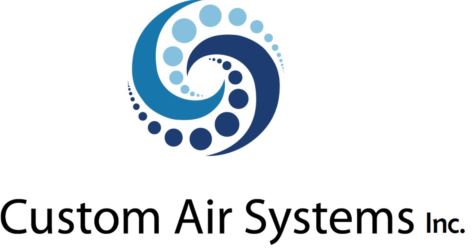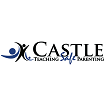
Ceiling fans are one of the most overlooked ways to enhance comfort and reduce energy costs. By enhancing air circulation and working in conjunction with your HVAC system, ceiling fans and energy efficiency are truly a natural pairing. They offer a practical, cost-saving way to maintain your comfort in hot weather while lessening strain on your AC—even preventing unnecessary air conditioning repair.
In this blog, the experts at Custom Air Systems Inc explain how ceiling fans can improve your comfort while increasing your HVAC efficiency. We'll also share some HVAC efficiency tips that put to good use ceiling fans.
Comfort vs. Temperature: The Effect of the Wind-Chill Effect Indoors
Ceiling fans don’t actually cool the air—they cool you down by moving air over your skin. This is known as the wind-chill effect, and it can make a room feel up to 4 degrees cooler without touching the thermostat. That means you feel less hot and enjoy the benefits of indoor air circulation from your ceiling fan while minimizing air conditioner use—helping reduce your electric bill in summer.
The Best of Both: Advantages of Pairing Fans and Air Conditioning Together
There are several upsides to using ceiling fans and air conditioning together, especially when it's very hot outside. By using both, you increase HVAC efficiency and maintain a comfortable indoor temperature with less effort from your cooling system.
Why you should use ceiling fans and AC together:
- Ceiling fans help lower HVAC load by moving cool air more evenly throughout rooms in your home. Decreasing HVAC stress is important, because it can save you from a breakdown that may lead to premature AC or furnace installation.
- Using overhead fans enhances comfort by eliminating hot spots and enhancing circulation.
- Running both ceiling fans and AC can cut energy consumption. If you have a home automation system, you can even modify your smart thermostat settings to bump up the temp a few degrees while your ceiling fan is running.
Clockwise vs. Counterclockwise Ceiling Fan Rotation: Which is the Correct Direction?
To make full use of your ceiling fans year-round, it’s important to set the blades to rotate in the right direction for the season. The direction impacts how air moves, which can either make you feel cooler or push warm air downward so you feel warmer.
When to rotate ceiling fans counterclockwise
On hot days, ceiling fans should spin counterclockwise at a higher speed. This creates a breeze that moves air toward the floor, amplifying the wind-chill effect and creating a cooler sensation.
When to rotate ceiling fans clockwise
When it's cold out, set your fan to turn clockwise on a slower speed. This lifts cooler air and pushes warm air near the ceiling down toward you, so you feel warmer without changing your thermostat.
How to Pick Out the Best Ceiling Fan for My Home
Selecting the best ceiling fan depends on a few critical considerations, including blade design, airflow rating and room dimensions. First, look for fans with a good balance of ECFM airflow and blade pitch to ensure efficient air movement in your home:
- ECFM is how much air a fan circulates—the cubic feet per minute, or CFM—per watt of electricity consumed. Fans with greater ECFM are the most energy efficient.
- Blade pitch is the incline of the blades. A steeper blade pitch moves more air than a shallower pitch but can also strain the motor.
Also, consider room size when sizing a ceiling fan—a fan that’s too small won’t circulate sufficient air, while one that’s too large may be too strong for the space.
Boost Your HVAC Efficiency With Help from Custom Air Systems Inc
At Custom Air Systems Inc, our HVAC specialists can help you stay comfortable while reducing strain on your heating and cooling systems. From efficient ceiling fan strategies and air conditioning installation to smart thermostats and furnace repair, we offer comprehensive solutions that fit your lifestyle. Reserve your appointment by calling 772-677-8981 today.




